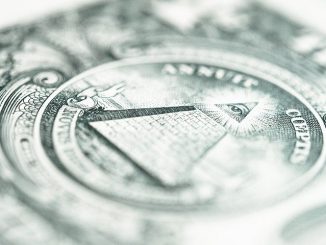There are two articles in the Wall Street Journal today that I believe are very important responses to the announcement of the Federal Reserve that it will release interest rate projections for several years out.
The first of these by Kelly Evans says a mouthful: “Boosting Transparency, Fed Puts Its Reputation on the Line.” (link)
I love the quote that Evans leads the article with…it is from Abraham Lincoln: “it is better to remain silent and be thought a fool than to open one’s mouth and remove all doubt.”
First of all, to produce projections of interest rates three years into the future? Come on…
And, to release the forecasts from all 17 members of the Federal Reserve’s open-market committee…
This is to produce credibility?
Come on…
Furthermore, the projections are to “make monetary policy more effective by lowering volatility and uncertainty in the market around the path of future rates.”
Formerly, those in the Federal Reserve believed that some uncertainty should surround its goals because this allowed markets to move incrementally due to the fact that market participants had to search for where the Fed was moving. At least this was the way it was when I worked at the Fed.
Knowing what the target will be results in markets that take discrete leaps…up or down…as market participants jump to the place where the wizards at the Fed now presume interest rates should be.
But, two points on this. The first one is that making everything depend on the Fed’s prognostications and the persistence with which the Fed holds onto the projections, can lead to “sure-thing” bets on the part of market participants. There are plenty of examples around in which “the market” bets against the ability of a government or a central bank to hold onto a desired “goal”. As the pressure builds up, the probability that the government or central bank will have to adjust to the reality of the situation can approach 100 percent.
The second point is that the Federal Reserve may actually be the cause of the volatility and uncertainty it is attempting to reduce. As the very actions of the Fed become less recognizable and as, as Evans states, the forecasts “differ significantly from reality” the authority of the Fed decreases and this, in itself, creates “volatility and uncertainty.”
I would argue very strongly that the actions of the Federal Reserve over the past four years…if not longer…have been a large part of the uncertainty it abhors and this has resulted in the increase in market volatility that it would like to reduce. But, this increase has not been due to a lack of “transparency” on the part of the Fed but has been due to a lack of understanding on the part of the Fed. And, this lack of understanding has been transmitted from the Fed to the financial markets.
This is where the other article in the Journal comes in: “Fed Rate Outlook to Bite Traders.” In this piece, Cynthia Lin argues that “With its push to provide a clearer policy road map, the Federal Reserve is about to give bond traders one less reason to like medium-term bonds as it pins down yields that already are at historic lows.”
Ms. Lin quotes Kent Engelke, chief economic strategist at Capitol Securities Management as saying, “The short end of the (yield) curve is dead.”
Ms. Lin goes on, “Some investors even are suggesting that the new policy may give little reason to trade bonds maturing as late as 2019.”
Doesn’t someone at the Fed understand this possibility?
I have always assumed that volatility was a function of the depth and breadth of the market. If the policy of the Fed has the result that it will tend to reduce the number of traders in the market, then it would seem to me that this is a movement will have the wrong consequences for the market.
As I stated yesterday, I believe that the move made by Mr. Bernanke and the Fed to achieve greater “transparency” of Federal Reserve operations is more an effort to justify what Mr. Bernanke and the Fed have done over the past four years or so. (See “Bernanke “Transparent about his lack of self-confidence,” link).
Furthermore, I believe that what has been done to the Fed over the past decade has changed central banking in the United States more that we can possibly imagine at this time. And, as most of you know that have read my blog over the past, almost four years, I am not convinced that the movement has been in the right direction. Unfortunately, I believe that we will be paying for this movement, in one way or another, over the next four or five years.
- Bulenox: Get 45% to 91% OFF ... Use Discount Code: UNO
- Risk Our Money Not Yours | Get 50% to 90% OFF ... Use Discount Code: MMBVBKSM
Disclaimer: This page contains affiliate links. If you choose to make a purchase after clicking a link, we may receive a commission at no additional cost to you. Thank you for your support!




Leave a Reply